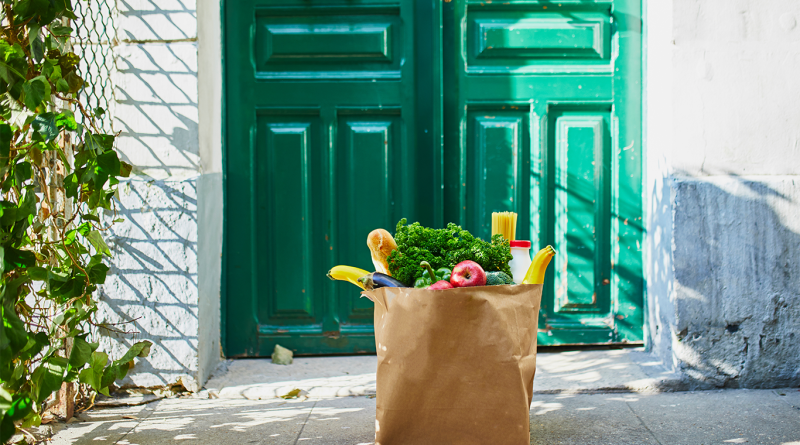Save A Lot Partners with Fabric and Uber to Offer Fast, Affordable Grocery Delivery in NYC
As the grocery industry continues to evolve, automation is increasingly becoming a game-changer, especially in high-density urban areas like New York City. In an effort to stay ahead of this trend, Save A Lot has partnered with Fabric and Uber to launch a cutting-edge micro-fulfillment center (MFC) in Brooklyn. This facility represents a major step forward in the retailer’s strategy to combine low-cost groceries with fast, on-demand delivery, providing a more convenient option for cost-conscious consumers in the city.
The concept of automated grocery fulfillment is not entirely new, but Save A Lot’s model brings a fresh take on this trend. The Brooklyn MFC marks the discount grocery chain’s first foray into New York City’s highly competitive online grocery market. Partnering with Fabric for automation and Uber for last-mile delivery, Save A Lot is aiming to provide affordable grocery options with unprecedented speed and convenience.
This new facility comes at a time when inflation and rising grocery costs have made consumers more sensitive to pricing. Save A Lot’s ability to streamline its operations through automation will enable the company to maintain its hallmark low prices while offering the added benefit of on-demand delivery, a service increasingly in demand by urban dwellers.
Fabric’s automation technology is revolutionizing grocery delivery
At the core of Save A Lot’s Brooklyn micro-fulfillment center lies Fabric’s advanced cube-based robotic system, which plays a vital role in speeding up the order fulfillment process. This system enables the fulfillment of large grocery orders—up to 50 items—in just six to eight minutes. By utilizing robots to pull items from storage and hand them off to human packers, the fulfillment center is able to complete deliveries more efficiently than traditional grocery stores.
This advanced automation brings several key benefits. Firstly, it allows Save A Lot to keep prices low by cutting down labor costs, a savings that is passed on to the consumer. Secondly, it speeds up delivery times significantly, enabling orders to be delivered within a 30-minute window. These factors position Save A Lot as a competitive player in New York City’s grocery market, where both affordability and convenience are crucial to attracting customers.
Fabric’s system also addresses a persistent issue in the grocery sector—labor turnover. With robots performing the bulk of the order-picking tasks, the need for human labor decreases, allowing the company to offer better wages to its remaining staff and further reduce turnover rates. The Brooklyn facility’s use of automation also represents a long-term strategy to adapt to urban grocery needs, which are heavily influenced by factors like space constraints, high rents, and increasing customer demand for fast service.
Save A Lot’s broader NYC expansion plan and the role of Uber
Save A Lot’s Brooklyn fulfillment center is part of a larger strategy aimed at expanding the brand’s footprint across New York City. While the company has traditionally focused on providing discount groceries in physical stores, this new venture signals a significant push into the online and delivery sectors.
One of the key elements of this expansion is Save A Lot’s ongoing partnership with Uber. By integrating its micro-fulfillment centers with Uber Eats, the grocery chain ensures that it can provide efficient last-mile delivery services to customers in even the most densely populated urban areas. This collaboration also allows Save A Lot to extend its reach across an eight-mile radius from the Brooklyn facility, ensuring that a large portion of the city can access its services.
The Uber partnership complements Save A Lot’s goal of increasing its presence in New York City, where it plans to triple its store count in the coming years. The combination of physical store expansion and automated fulfillment hubs highlights the company’s dual approach to growth—one that focuses on both in-store customer experiences and online convenience.
Automation, accessibility, and affordability as the future of grocery retail
The launch of Save A Lot’s automated micro-fulfillment center in Brooklyn is indicative of a broader shift in the grocery retail landscape. As urban consumers increasingly demand fast, affordable delivery options, retailers must adapt their supply chains to meet these needs. Automation offers a clear solution, allowing companies like Save A Lot to cut costs, speed up delivery times, and improve overall customer satisfaction.
The implications for the industry are significant. Automation could redefine the way consumers shop for groceries, particularly in cities where space is limited and operational costs are high. As Save A Lot continues to expand its automated fulfillment strategy, it may set a new standard for how groceries are sold and delivered, not only in New York but across other urban markets in the future.
Sources:
